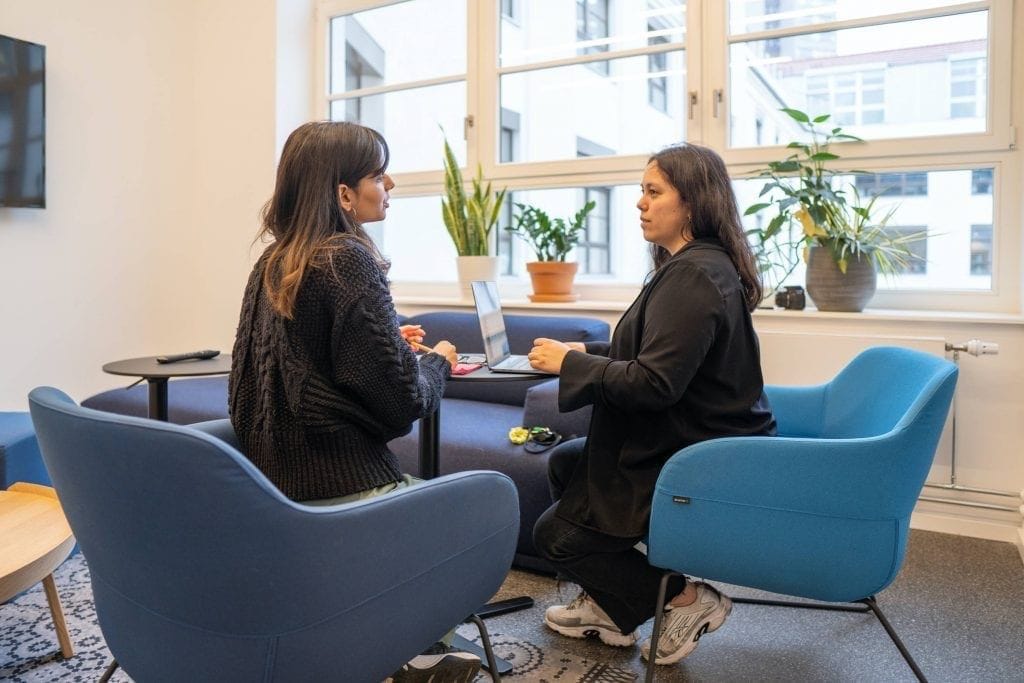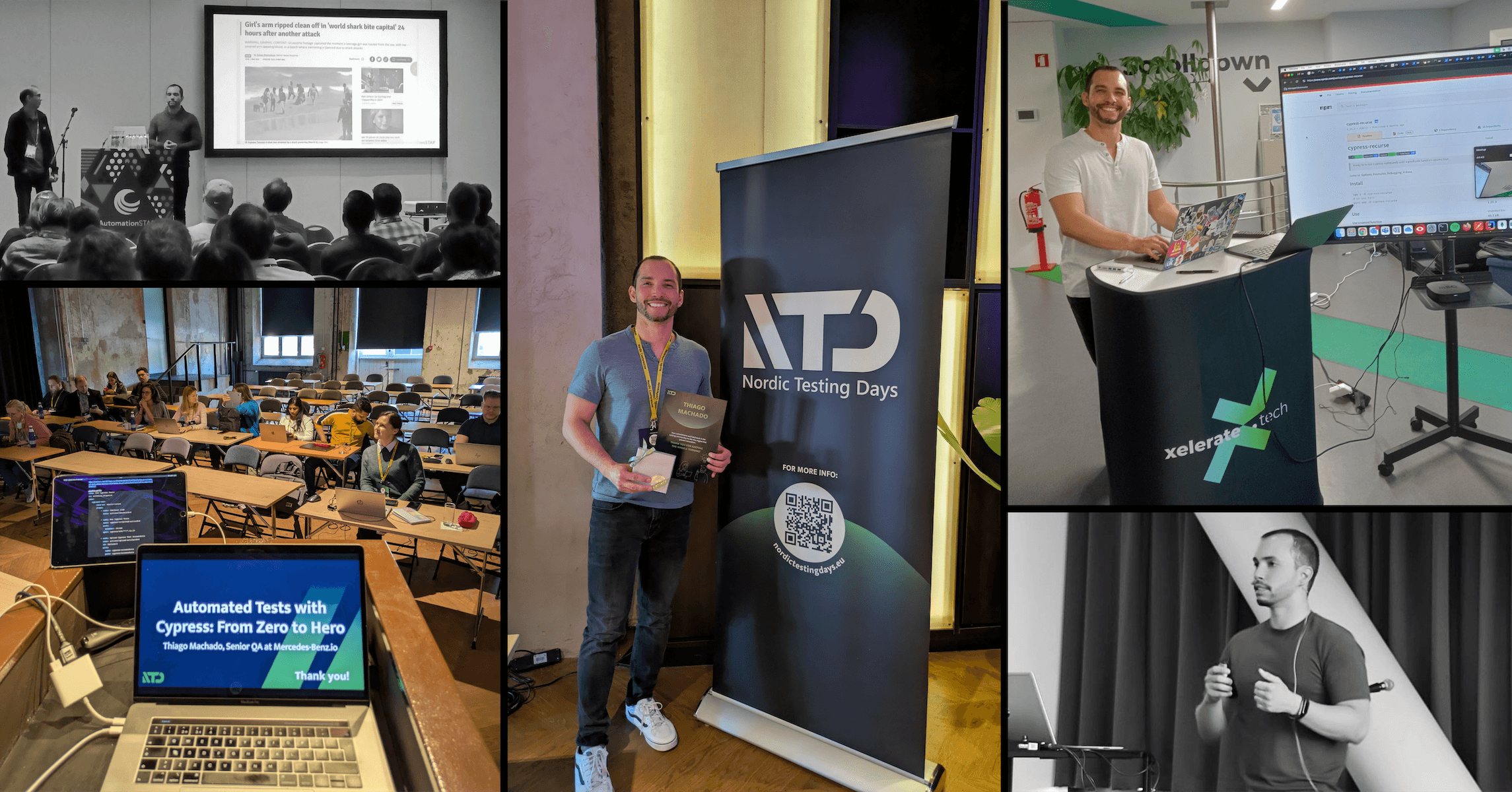
How I became aware of unconscious biases in recruiting
“I’d love to work with them” I thought to myself when I was looking at the application of a candidate a couple of weeks ago, “maybe we could even become friends!”. I was already excited about filling this role because it was in an HR-related field and I would potentially get to work closely with the person we would ultimately hire. And the resume I was looking at made me even more excited – the applicant was from Hamburg, Germany, the same city that I was born and raised in.
But not only did we share the same hometown, we also both lived abroad in the same country for a while (Canada’s nice, eh?). The fact that she lived in Calgary reminded me of a wonderful snowy vacation in the Rocky Mountains a few years ago. This had to be a sign, it couldn’t only be coincidence!

With great excitement I looked at the feedback from the hiring manager, who pointed out a few concerns about the application that seemed completely valid. Despite having looked through the application multiple times, I hadn’t noticed any of these. That’s when I paused for a moment and realized I had just experienced something that is called affinity bias, which describes the reason for why I unconsciously favored the applicant because we had things in common and despite a lack of skills.
Back then, I only knew I had to be especially mindful with this application while I learned more about the cognitive process that could have easily impacted the hiring decision if I hadn’t paid attention.
Uncovering unconscious biases
When I started my internship in recruiting at Mercedes-Benz.io I only had a bit of practical recruiting experience from my previous job. I had heard about unconscious biases in university, but never considered it that complex or difficult to become aware of in the hiring process – until that day I described previously. Here’s what I learned since then:
Everyone processes information with a set of unconscious biases. There’s a limit to how many of the millions of pieces of information we’re exposed to our brain can process consciously. We build a set of assumptions which are influenced by our own ideals, perceptions, personal experiences, cultural environments and background to help us process information unconsciously.
These shortcuts are natural and nothing to be ashamed of, but they pose a huge risk in the recruitment process, because they make the hiring decisions subjective and unfair. They may lead to teams that aren’t diverse, the dismissal of qualified candidates and the recruitment of unqualified candidates, because candidates aren’t objectively evaluated based on their skills and qualifications.
We’re so alike: the affinity bias
One of those unconscious processes is called Affinity bias and describes the tendency to favour someone who’s like us either on a personal or professional level. Someone who we can relate to, with whom we share the same experiences or commonalities, because it’s much easier and more comfortable to be around people who seem familiar. Take my experience, for example: The simple fact that the candidate lived in some of the same places that I did had such a big influence on me that I would have probably selected her for the next round without screening the profile any further.
When you’re looking at numerous resumes in a week, it’s crucial to be aware of the shortcuts that your brain may take. If you don’t, you may end up with a team of people that get along very well but isn’t very diverse. It’s especially important to pay attention to the affinity bias in times where culture fit is considered a very important factor in hiring decisions – you can still aim to hire people who are a culture fit of course, as long as you’re not hiring them only because you went to the same school, have common interests or just get along really well.

There’s a lot more to be aware of
In addition to the affinity bias, there are a lot more unconscious biases to be aware of in the recruiting process. While I won’t cover all of them, these are the few that stood out to me as particularly important:
- Confirmation bias: When you choose and prioritize information to meet your prior expectations. For example: you receive a referral from a colleague for “a really great developer and even better leader”, and throughout the interview process you favor information confirming this expectation and neglect information disproving it.
- Halo effect: When one positive attribute outshines potential red flags and creates a “positive glow” around the candidate. For example: The designer you’re interviewing has won many awards with personal projects, but has only ever stayed with the same company for a maximum of six months. Despite that red flag you recommend to move forward with the candidate because of the awards she has won.
- Horn effect: The opposite of the halo effect is when you judge someone too quickly based on only one negative attribute that may not even be related to the job. For example: When you talk about the dog policy in the office, the candidate mentions that she dislikes dogs, not knowing that you’re a huge dog lover yourself. Even though you know this is unrelated, you let it cloud your judgement and impact the hiring decision.
- Conformity bias: When you’re not the only one interviewing a candidate and change your opinion to conform with the opinions of others. For example: you have good reasons to think that a particular candidate wouldn’t be a good culture fit, but all the other interviewers want to hire her. You end up changing your opinion and hire the candidate.
- Contrast effect: When you’re comparing candidates to each other instead of judging them objectively based on the needs of the role. For example: You’re trying to find an office coordinator. You immediately reject the first two candidates because of their lack of experience, and end up hiring the third candidate because she at least has some experience despite that being way less than the requirements originally called for.

Managing biases in the recruiting process
By reading this you’ve already taken the first and most important step towards managing biases in your recruiting process: you’re now aware that those biases exist. To help with your next steps, here are four practical tips you can start applying tomorrow.
- Prepare: Being prepared throughout the recruiting process can go a long way towards reducing the impact that biases can have on it. Make sure you know the exact requirements and skills to look for, prepare an interview guideline which you adhere to, and take some time to understand what skills, behavior and criteria you want to see, why you want to see them and what questions you can ask you find out more about them. Think about this before every step of the process, for example when you start screening applicants or before you go into an interview. Being prepared can prevent your thoughts and conversations from derailing because of biases.
- Standardize: To give candidates the same chance of standing out, think about ways that can help to standardize the recruiting process. Prepare a list of questions that you can stick to and make sure that every question is answered, avoid too many off-the-cuff questions. Think about concepts like scorecards to help with a standardized way of evaluating candidates.
- Reflect: Frequently check in with yourself and take time to reflect. How are you feeling? Is anything on your mind that may affect how you screen candidates or interview? Has anything in the interview influenced how you perceived the candidate? Being under time pressure or having had a bad night’s sleep can have a huge impact on how you perceive someone, so make sure to acknowledge how you feel. Reflect on the candidates on your own before you discuss them with others.
- Take notes: Rigorously document the entire interview process, not only the red flags or things that stand out. For example, you may want to document the similarities of candidates with yourself. Reviewing notes may help you to spot biases, and allow you to adjust and clarify why you had certain feelings about a candidate.

Of course, this isn’t everything you can do to improve how biases affect the recruiting process – unconscious biases are complex, and even if you’re aware of them you might catch yourself being affected by them from time to time. But I hope that by reading about these biases you can start taking steps towards being more aware of them yourself, and reduce how much they affect your recruiting process.
Want to see how unbiased we are? Visit our job portal and …
Related articles

Thiago Ferreira
Finding my voice, one speech at a time
Do you know when you watch a nice speech or talk and get inspired by that? Did you ever have the feeling of “I would like to do that one day”?
Jul 2, 2025

Inês Marques, Mariana Finkenauer, Raphael Marques
Design Meets Dev: How Collaboration Shapes Better Digital Experiences
At Mercedes-Benz.io, crafting seamless digital experiences means more than just writing code or designing interfaces - it means building together. Between design systems and frontend logic, wireframes and production, pixels and components, there’s something deeper at play: a continuous dialogue between designers and developers.
Jun 27, 2025

Eduarda Cruz, Emna Maâlej, Hélia Freire
Women in Engineering: Stories of Belonging, Growth, and the Power of Support
Engineering shapes the world we live in. But the people shaping it don’t always reflect the world around us. Women in engineering still face barriers of access, representation and recognition. But they also bring resilience, innovation, and perspective that drive progress in ways that are both measurable and meaningful.
Jun 24, 2025